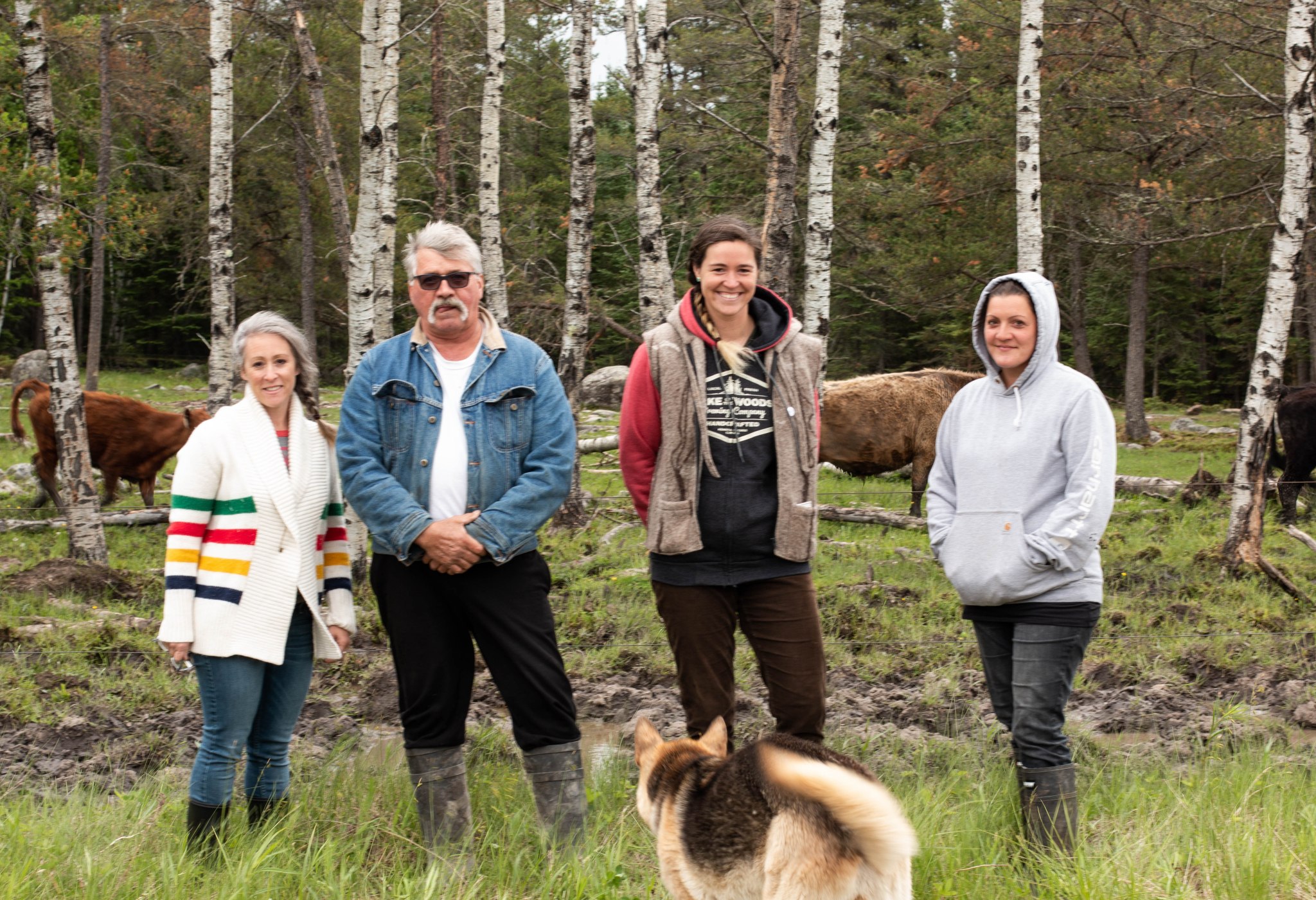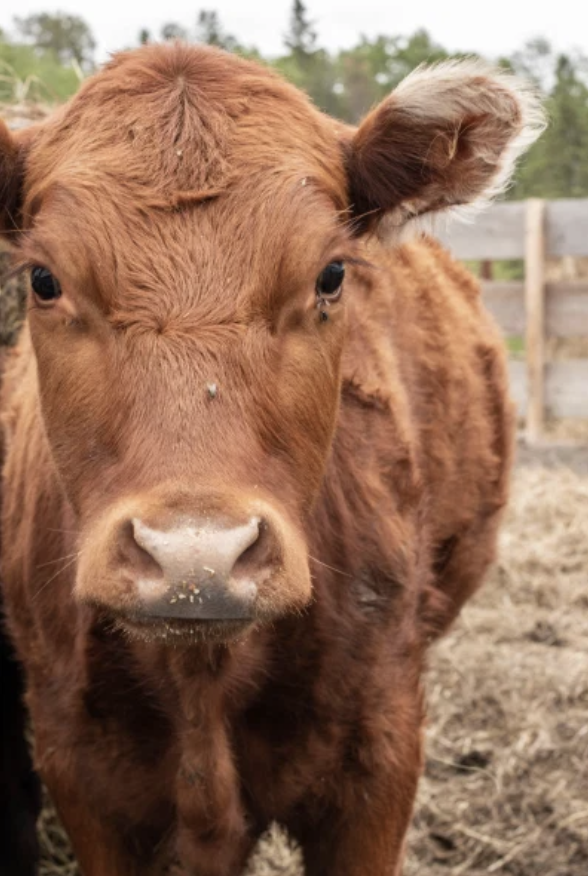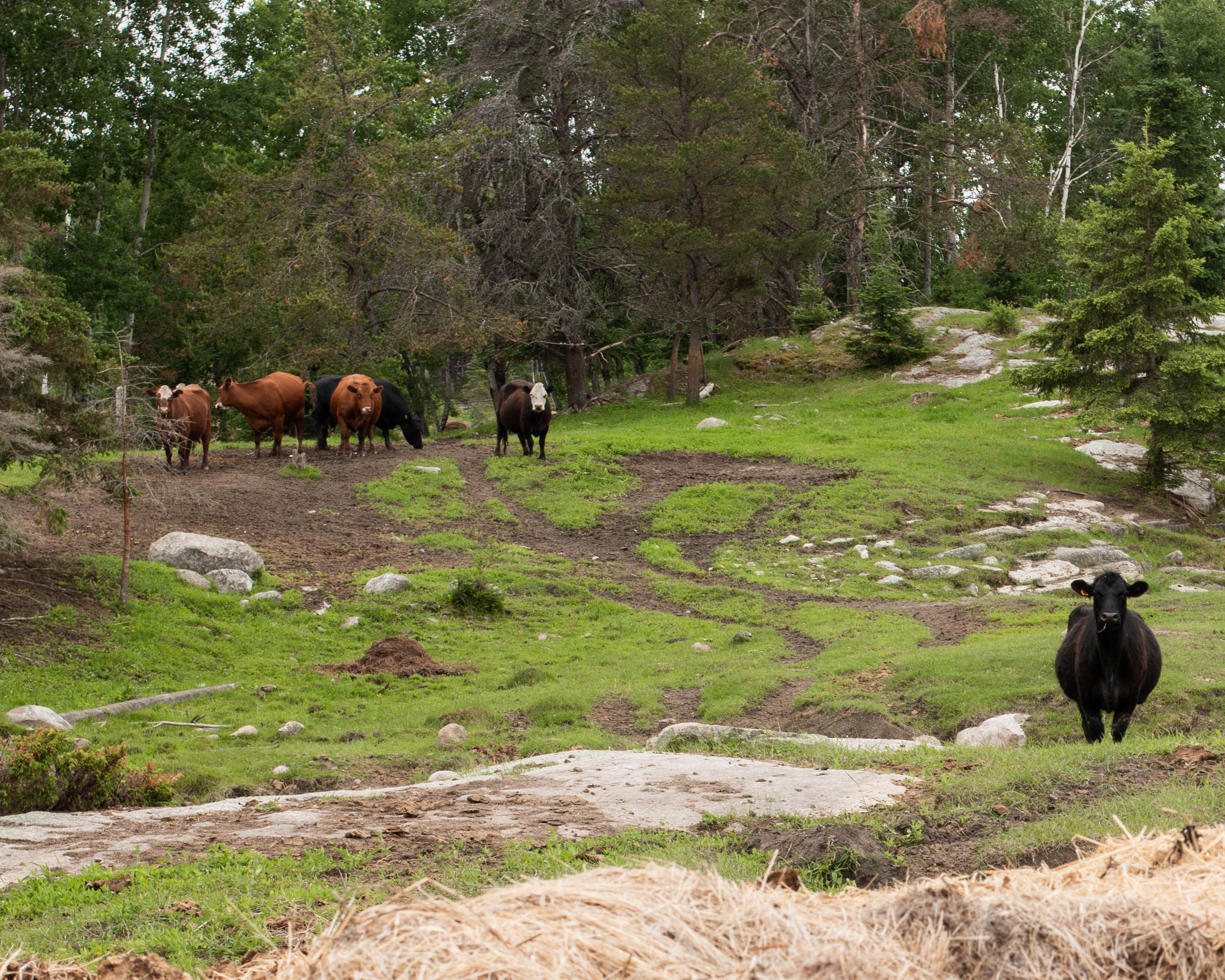 Author: Brooke Christie
Author: Brooke ChristieIt’s a real high five to humanity when we give waste another round of purpose. Fuelling vehicles with biodiesel, heating buildings with compost…. it’s smart, and it feels good.
Going to Paul’s 300-acre farm and seeing the healthy cows feasting on spent grain from Lake of the Woods Brewing Company is entirely an example of a brewery taking sustainable action.
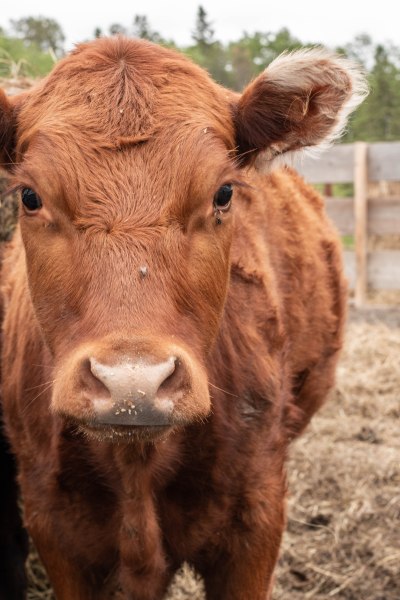
I’d never been to a farm in Northern Ontario. Travelling down the windy gravel road, it was clear we were not headed to the Manitoban flatland farms I was used to, where prairies, powerlines and sky is your view in all directions. Paul’s 40-year-old farm was in the heart of the rugged Canadian Shield. When we arrived, Paul and his daughter greeted us kindly, and got right to walking us over to their forest pasture; acres of natural grasses, scattered with boulders, bushes, running water, and cows. A beautiful sight already, and the ‘show’ had not even begun. Paul fired up the tractor and went off to get a load of spent grain. As he made his way back, we could hear him calling out to his girls, “COW BOSS, COW BOSS” In good time, the ladies came trotting up from all directions, moo-ing their delighted responses… it’s mealtime!
Paul lowered the tractor bucket and spread out the goodness. As we watched the cows chow down on their meal, he proudly informed us that the mother cows grow their young on a complete diet of forest pasture and LOWBrewCo spent grains.
So just what are spent grains? In a nutshell, they are the bulk of the by-product created when brewing beer. Everyone has heard the simple saying that all you need to make beer is malt, hops water and yeast. Well, it is true, and it is all that malted grain that provides the sugars needed to feed the yeast, which, in turn, creates the tasty alcohol. In the end, you have a rich, fibery, pile of leftover grain husks.
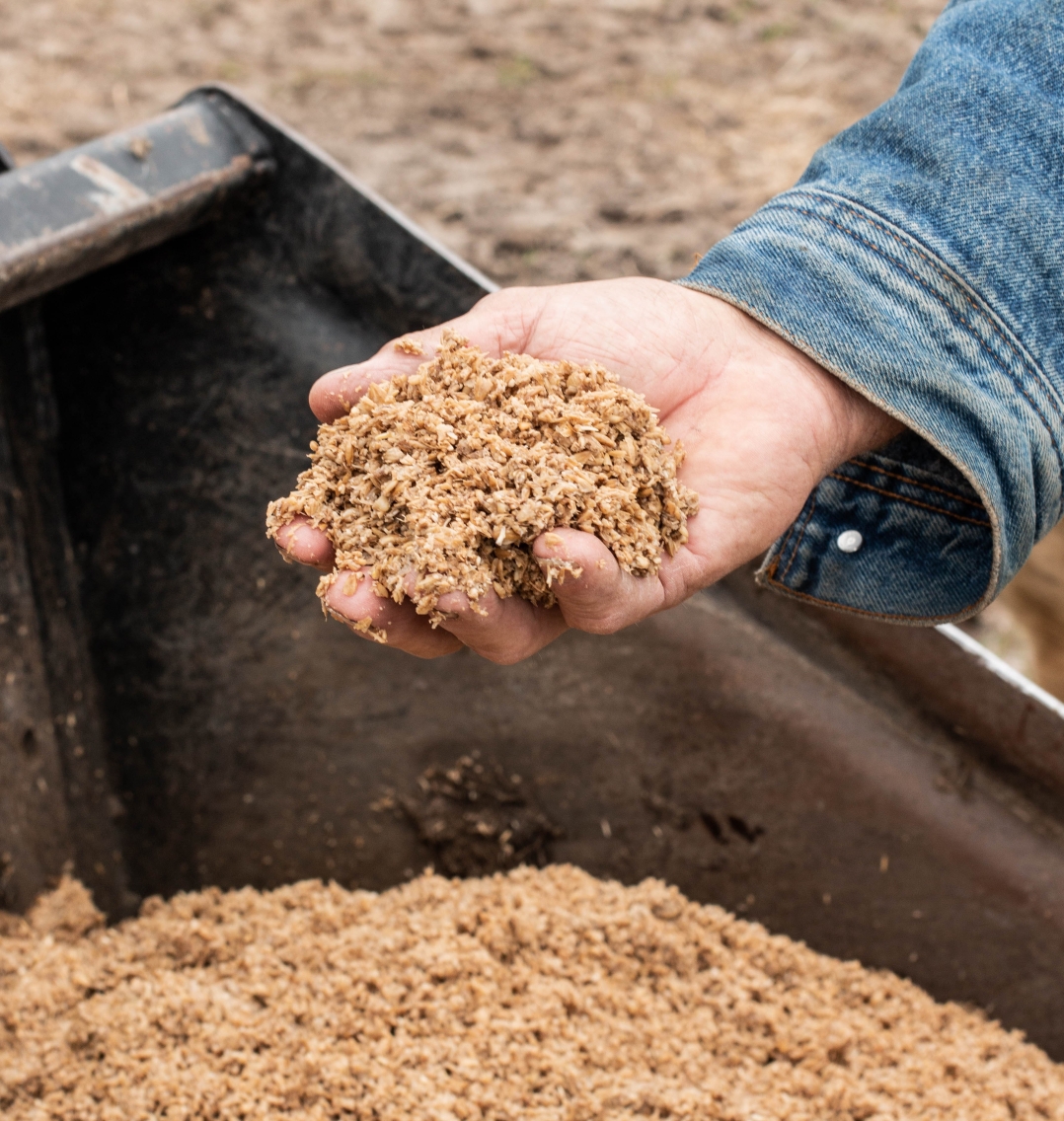
Cows, like humans, enjoy a high fibre meal, though they have a much more impressive ability to derive nutrients from it. Their ability to digest and appreciate the fibrous diet means that cows can really chow down on spent grains without getting bloated. The result? Every single grain used to make our beer becomes cow food. Hooray for high fibre low sugar! Eating the spent grains is the highlight of the day for the cows, and I can see why… the aroma from the grains is rich, roasty and malty… and smells straight up flavourful. Though tempted, I did not get in there and start munching on a mouthful. (I know, I should have.)
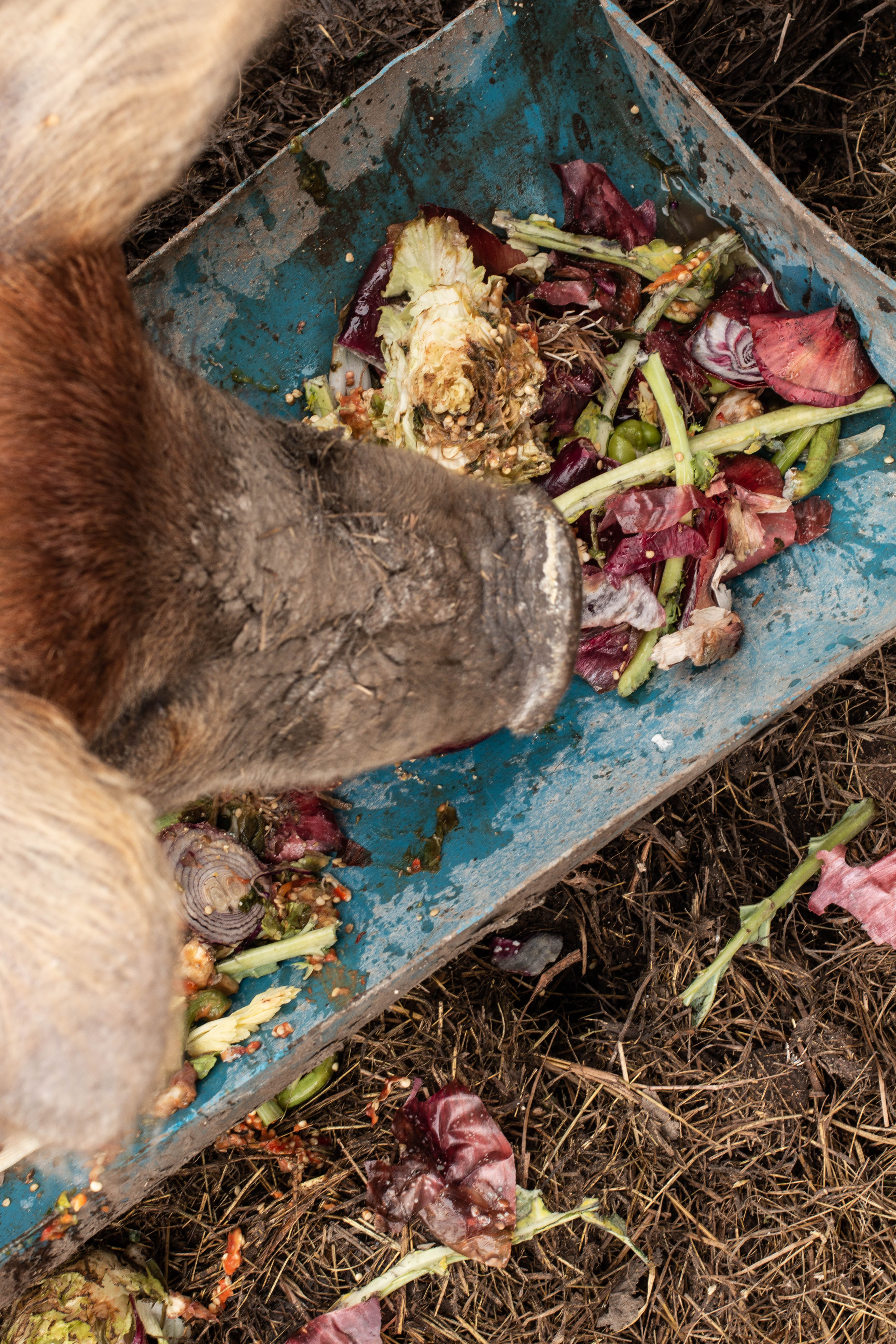
Believe it or not, Sophie the pig was not such a fan of the grainy feast, but no worries; she gets bucket loads of veggie and table scraps from the Taproom instead!
The visit to Paul’s farm, and seeing first hand what happens to all the LOWBrewCo spent grain was a special experience. Breweries across Canada and the world are finding ways to make use of the malty by-product; be it serving spent grain bread in their restaurants, fertilizing gardens, making pet treats, or even some breweries, such as Alaskan Brewing Co. are stepping it up a notch by using spent grains to power biomass steam boilers! I found this article useful for learning about these other innovative methods going on out there. It is nice to see Kenora’s brewery making a healthy difference on this farm, and I can’t wait to see what else breweries across the land come up with to keep craft sustainable and to think community first.
